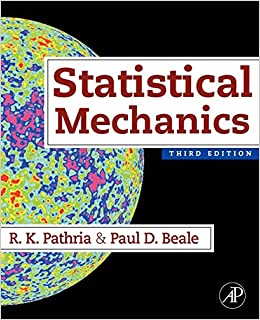The most general Gaussian distribution of variables (left{u_{1}, cdots, u_{N} ight}) is of the form [
Question:
The most general Gaussian distribution of variables \(\left\{u_{1}, \cdots, u_{N} \right\}\) is of the form
\[
P\left(u_{1}, \cdots, u_{N} \right) \sim \exp \left(-\frac{1}{2} \boldsymbol{u}^{T} A \boldsymbol{u} \right)
\]
where \(A\) is a symmetric positive definite matrix. The matrix has only positive eigenvalues and can be diagonalized into diagonal matrix \(\left(\tilde{A}=U^{T}= \right.\) \(U^{-1}\) using the orthogonal the matrix \(U\). The eigenvalues \(\left\{\lambda_{1}, \cdots, \lambda_{N} \right\}\) are all positive and \(\operatorname{det} U=1\). The normalization is
\[
\begin{aligned}
\mathscr{N}=\int d^{N} u \exp \left(-\frac{1}{2} \boldsymbol{u}^{T} A \boldsymbol{u} \right) & =\int d^{N} y \exp \left(-\frac{1}{2} \boldsymbol{y}^{T} \tilde{A} \boldsymbol{y} \right) \\
& =\sqrt{(2 \pi)^{N} \prod_{i=1}^{N} \lambda_{i}=\sqrt{(2 \pi)^{N} \operatorname{det} A}}
\end{aligned}
\]
The transformed variables are \(\boldsymbol{y}=U^{T} \boldsymbol{u}\) so the Jacobian is unity. The integral of the average of \(\exp \left(\boldsymbol{a}^{T} \boldsymbol{u} \right)\) can be determined from completing the square inside the exponential,
\[
\int d^{N} u \exp \left(\boldsymbol{a}^{T} \boldsymbol{u}-\frac{1}{2} \boldsymbol{u}^{T} A \boldsymbol{u} \right)=\mathscr{N} \exp \left(\frac{1}{2} \boldsymbol{a}^{T} A^{-1} \boldsymbol{a} \right) .
\]
Averaging the quantity \(\left(\boldsymbol{a}^{T} \boldsymbol{u} \right)^{2}\) is accomplished by transforming to the \(\boldsymbol{y}\) variables which, using
\[
\int d x x^{2} \exp \left(-\lambda x^{2} / 2 \right)=(2 \pi)^{1 / 2} / \lambda^{3 / 2}
\]
gives
\[
\int d^{N} u\left(\boldsymbol{a}^{T} \boldsymbol{u} \right)^{2} \exp \left(-\frac{1}{2} \boldsymbol{u}^{T} A \boldsymbol{u} \right)=\mathscr{N} \boldsymbol{a}^{T} U \tilde{A}^{-1} U^{T} \boldsymbol{a}=\mathscr{N} \boldsymbol{a}^{T} A^{-1} \boldsymbol{a}
\]
Step by Step Answer:






